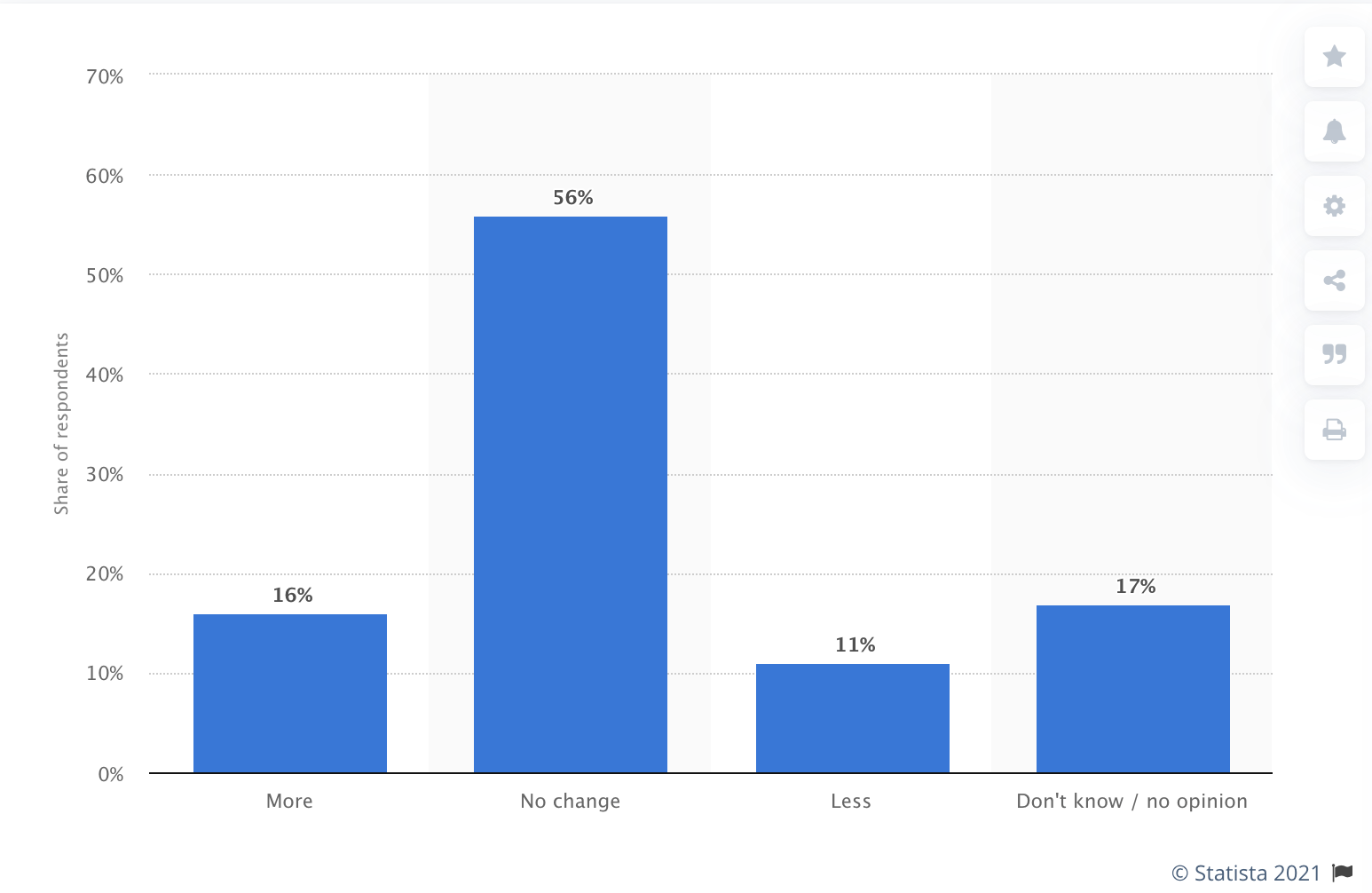In an industry that is constantly changing, it’s crucial to keep up-to-date with the latest statistics and trends surrounding gym memberships. Like all membership-based companies, people are at the core of your business. It’s your members that help lead to your success and increase revenue; both online and in-person.
By staying on top of the latest information, you can use it to underpin business decisions and planning. Understanding the latest gym membership statistics means you can learn what will get members through your door (or booked in online) and how to keep them loyal in the long run.
Here, we look at the gym membership statistics that have shaped the industry in recent years, and what’s to come in the future.
Gym Memberships Statistics: Then and Now
The fitness industry was hit harder than most by the pandemic. It may be in the rearview mirror, but its effect on the world of fitness cannot be understated.
In this section, we’ll take a quick comparative look at the fitness industry pre-pandemic, so we can understand how COVID-19 has impacted the latest statistics.
The Fitness Industry Pre-Pandemic
- Before the pandemic, the global health club industry finished the decade with record performance: worldwide, industry revenue totaled US$96.7 billion in 2019
- More than 184 million members belonged to nearly 210,000 health and fitness facilities.
- In 2019, over 1 in 5 Americans belonged to at least one health club or studio in the US.
- The number of members was also up 2.7% from 2018 at 62.5 million, compared to 64.2 million members in 2019.
It makes sense that over this time as the number of health clubs and gyms has risen, so has the number of members. The fitness industry was thriving with year-on-year growth pre-pandemic, and the future looked bright, but 2020 became the year that changed everything.
The Fitness Industry Before and After the Pandemic
- The 2020 IHRSA report forecast that 2020 would be a challenging year for the fitness industry.
- But it was also predicted that the global health and fitness club industry would continue to recover as the industry reopens.
- The report estimates that the US gym and health club industry lost $13.9 billion from mid-March to August 31, 2020.
- This is no surprise given that the sudden closure of gyms and studios came as a shock: the industry was not prepared.
- But with a quick pivot to online services, the fitness industry was able to survive and bounce back.
In our ABC Glofox report, The Impact of COVID-19 on the Fitness Industry, our key findings revealed that boutique gym attendance and class bookings in some world regions bounced back to around 91% of pre-COVID levels toward the end of 2020. The report is based on an analysis of activity across a sample of 2,000 fitness businesses in the US, UK, Ireland, Australia, Singapore, Hong Kong, and Malaysia.
Findings from these industry reports including the IHRSA, The Glofox Report, and numerous figures collected from Statista, all tell a similar story: COVID-19 flipped the fitness industry on its head, but as online fitness swept to the rescue, our industry’s future is still a promising one filled with exciting new opportunities.
Read More: The ABC Glofox Fitness Industry Report
Consumer Mindsets Have Changed. Here’s What It Means for Gyms and Studios
Amid the pandemic, consumer habits evolved at pace. There is now a greater emphasis on health and well-being. In general, people are investing in various wellness apps, fitness technology, and online fitness services to support their physical and mental health through lockdowns. Over the last few years, with the rise of boutique fitness, many studios have completely transformed the way we think about the traditional gym.
The boutique fitness movement is backed by a generation of members who take a big interest in their health and fitness. Gen Z and Millennials are a group of consumers who are willing to pay a premium price for health-related services. They want connectivity, community, and an innovative approach to wellness.
Xponential Fitness is considered one of the most innovative companies in the world according to Fast Company. The brand owns different boutique fitness businesses including Purebarre, Stretchlab, Yoga Six, and Club Pilates Cyclebar.
Founded in 2017, the company now has approximately 1,700 studios under all of its brands, and despite the pandemic, Xponential Fitness experienced growth in 2020. The company opened new locations in Australia, South Korea, and Saudi Arabia, with more studios in development in Germany, Spain, the Dominican Republic, and Singapore.
Xponential is just one example that illustrates how the consumer demand for community, innovation, and connectivity has been fuelled to whole new levels by the pandemic.
Want to learn how to build your own loyal community for your fitness business?
Download the Master Community Building Guide Here
7 Gym Membership Statistics to Boost Your Membership Retention
To many people, the gym is about more than exercise. And while the experience may now be mostly online, this has never been more true. It’s where people connect, socialize, and work toward their goals. If you’ve ever wondered what people do most at the gym or the odds that a gym member makes it past the six-month mark, we take a look at 10 gym membership statistics and trends so you can discover more about your members, increase engagement, and boost retention.
1. A Successful Onboarding Strategy is Crucial for Retention

Just a 5% increase in customer retention can increase company revenue by 25-95%. What many might not realize is that your retention strategy starts the moment a new member signs up. There are studies to prove that if your members are correctly onboarded, they are likely to stay loyal for longer. In his landmark study, fitness industry retention and acquisition expert Dr. Paul Bedford found that 87% of members onboarded correctly still remained active after 6 months.
Read More: How to Boost Retention in Your Fitness Business
2. Group Workouts Help Keep New Members Motivated
Even with the best of intentions, it can sometimes take a lot for new members to stick to a routine. So, what can you do to help them stay on track?
In Strava’s 2018 Year in Sport report, the findings explore how New Year’s resolutioners can improve their chances of sticking to exercise resolutions – but this can be applied to a new gym member at any time of the year. The report found that about 94% of users who set goals remain active nine months later. Strava’s data also shows that when we work out in groups, we tend to run and cycle 21% further and work out 10% longer.
Read More: The Essential Guide to Fitness Challenges
3. Half of New Members Quit Within Six Months

The majority of health clubs and gyms lose 50% of their new members within the first six months. Annually, a very small amount of health clubs lose less than 30% of their members. This presents a gym owner with a significant opportunity to connect with more members in a more meaningful way. Sadly, membership cancellations are part of the business. However, if you notice you’re losing members at an uncomfortable rate, it’s time to step in.
One way to pick up on problems that could be causing gym members to leave you is a gym membership cancellation survey. Take the chance to ask members why they are leaving. Of course, there are understandable reasons why a member may leave but, it could be something within your control. The survey lets you know the reason behind a cancellation. You can then fix the problem quickly, so another member doesn’t leave for the same reason.
Read More: The 12 Questions You Need to be Asking Your Members
4. Home Fitness is Here to Stay
Home fitness has been growing since long before COVID-19, but its popularity has surged during the pandemic: the convenience and flexibility of online fitness can no longer be ignored as people strive to keep physical activity levels up with home workouts. Between Q1 and Q2 of 2020, at the start of the pandemic, home fitness app downloads grew globally by 46%. According to the report, 60% of Americans enjoyed their home workouts so much, they didn’t plan on going back to a physical gym.
The ABC Glofox Insights Report reveals that increases in online fitness classes have had an enduring effect on people’s behavior. In Ireland, when gyms had reopened and stayed open before the most recent lockdown period, online was shown to be helping increase activity levels beyond pre-COVID-19 levels. This, the report suggests, will drive fitness business owners to adopt a hybrid model as they search for revenue streams in the future.
The Customer
Engagement Playbook
for Your Fitness
Business
Discover more Customer Spotlight: How Victoria Thomas Created a Loyal Community of Committed Fitness Members
Victoria Thomas, founder of JourneyFit, began her business a way of providing open, accessible fitness classes and platforms to her local community.
Beginning with one location, run by just herself, she has since built a thriving franchise with three locations (and counting)
How did Victoria achieve this?
We’ll let her tell you herself:
5. At-Home Gym Members Are Investing in Equipment
As we know by now, with gyms and fitness studios closed, people were working out from home, causing a surge in sales of home gym equipment. A 2020 report prepared on behalf eBay.com collated data from around the online retail world to help put some numbers to home-gym trend. The report found that between March and April 2020, online sales of fitness equipment increased up to 20 times in some categories compared to the same timeframe in 2019. Comparing March and April numbers from 2019, sales of dumbbells alone had increased by 1980%.
For now, this means that members can get the most from working out at home. It’s also somewhat of an incentive to stick to their online gym membership. Buying exercise equipment can quickly become a hefty investment, and with each workout, users are getting the most out of their purchase.
In the long run, it means that members will be equipped to continue working out both at home and in the gym. This reinforces that providing a flexible hybrid offering is essential for gyms and fitness studios if they want to increase their memberships and ensure long-term retention.
Read More: Everything You Need to Know About Running a Hybrid Fitness Business
6. Top Reasons for Quitting the Gym
There are several reasons why someone may quit the gym. The top reasons often include pricing, members not actually using their memberships, losing motivation, feeling out of place, moving away, and not seeing results quickly enough.
In today’s online-gym environment, a lot of these common barriers are much more easily addressed. Digital offerings are more accessible and flexible than ever before, with various pricing tiers to offer value to everyone. A member’s “local gym” doesn’t actually need to be local anymore; they can join in anytime, from anywhere in the world.
In a study by The Retention People, they found that health club members are more likely to renew their gym membership if they participate in group exercises. During the study, researchers analyzed 10,000 UK health and fitness members and followed up with them over regular intervals to measure their habits and behaviors. They found that 48% went to the gym for one activity, 32% for two, and 20% for three or more activities. The risk of canceling was 56% higher in gym-only members compared to group exercisers.
The key takeaway here is that live online classes are the best tool you have for retaining members in the long run. Everyone who shows up is in it together and is held accountable for showing up, just like they would at an in-person class.
Read More: Everything You Need to Know About Streaming Workouts
7. Consistency is Key

In 2019, more than 62.5 million gym members visited the gym 104 days per year while 9 million non-members hit the gym an average of 24 days a year. About 18% of members actually went to the gym consistently. Out of those who actively used their gym membership, 49.9% got to the gym at least twice a week. Another 24.2% made it to the gym at least once a week.
Flash forward to today, where there is no need to leave your home to ‘hit the gym.’ Now, 56% of Americans work out just as much online, while 16% actually exercise more than they used to before COVID-19.

Removing time constraints with on-demand content gives gym members the flexibility to commit more time to exercise, while live workouts provide the consistency many people need to stay motivated and on track.
Read More: 15 Exercise Ideas for Group and On-Demand Workouts
In Summary
Gym statistics have changed drastically over the course of the pandemic. But at this point, it’s clear that there is still demand for gym memberships, both online and in-person. The gym is about more than exercise and fitness, it’s a place for people to connect, stay motivated, and see results. Whether it’s to lose weight, get fitter, or meet someone new, there are a ton of reasons that people are signing up for online memberships right now. By staying up-to-date with the latest gym membership statistics, you can make data-driven decisions centered around your members.
How ABC Glofox Can Help Boost Your Member Retention
You’re a fitness business owner or manager, you probably spend a lot of time behind a desk managing spreadsheets, booking in clients, scheduling classes for your trainers, and a million other things.
The ABC Glofox platform is designed to help you with all those tasks – allowing you to step out from behind the desk and onto the gym floor, where you really want to be.
Our platform is designed for fitness professionals, by fitness professionals. All of our features are developed in tandem with our customer feedback, creating a product and service that is specifically tailored to your needs and wants.
If you want:
- A unique branded app
- An easy-to-use automated messaging system for your members
- An intuitive class and member management system
ABC Glofox is the platform for you.
The best way of setting up your business for success is by building versatility into your foundation.
We may not be in the midst of a pandemic anymore, but the fitness industry has never been static. By using our platform, you can create a predictable, dependable business foundation that allows you to stop focusing on the day-to-day and look ahead to the year-to-year.
Want to learn more?














